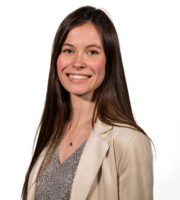
Watchdog group says data doesn’t support their claim black doctors better serve black patients
Many medical schools are adopting a flawed theory called “racial concordance” to justify admitting students based on their race, a medical watchdog organization warned in a new report.
Regardless of the Supreme Court’s ban on affirmative action last June, many institutions of higher education, including medical schools, still appear to be seeking ways to keep race a part of their admissions process.
One way that they may be trying to get around the ruling is the theory of racial concordance, which argues that pairing patients with doctors of the same race has a positive effect on health outcomes. The idea was erroneously cited by Supreme Court Justice Ketanji Jackson’s affirmative action dissent.
Do No Harm, a watchdog organization dedicated to keeping identity politics out of medical education, recently released a report refuting this argument, “Racial Concordance in Medicine: The Return of Segregation.”
According to Do No Harm, most research does not support racial concordance.
“While advocates point to a small number of studies, they are generally cherry-picked and decisively outweighed by the full body of scientific research on the topic,” the report states.
The concept actually can work against its stated goal and further divide patients and doctors of different races, according to the report.
“Given the evidence, it is irresponsible for medical organizations and political actors to push, in practice or policy, for racial concordance in medicine,” the report states.
However, the concept still has support from a number of prominent medical organizations, including the Association of American Medical Colleges. In an amicus brief filed in Students for Fair Admissions v. Harvard, AAMC argued that black physicians are “more likely” to provide better treatments to black patients than physicians of different races.
The association backed its claim by citing a study about infant mortalities that appeared in the journal Proceedings of the National Academy of Sciences.
“… clinical penalties for Black newborns treated by Black physicians are halved compared with the penalties Black newborns experience when cared for by White physicians,” according to the study.
The association argued that the study shows “having a Black physician is tantamount to a miracle drug. It more than doubles the likelihood that the baby will live.”
However, when asked about the argument, Do No Harm told The Fix that there are mathematical issues with AAMC’s assertion.
“The ‘clinical penalty’ is halved, but that doesn’t mean the survival rate doubles. The ‘penalty’ goes from .4% death rate to a .3% death rate, but the survival rate doesn’t double from 99.6% to 199.2% (because it’s obviously impossible),” Do No Harm told The Fix in an email.
MORE: Think tank will ‘monitor compliance’ with affirmative action ban
Do No Harm refuted AAMC’s claim with a second argument in its report, stating that even if the medical association had properly interpreted the study, there are still additional factors that need to be considered.
“If black newborns, on average, have more severe health issues, which other evidence strongly indicates is the case, and if babies with more serious medical problems are more likely to be assigned to a white doctor, the results of this study would be significantly biased,” Do No Harm states.
The Fix reached out to AAMC to ask if the organization planned to review Do No Harm’s report. AAMC responded promptly stating that they did not have anyone available to meet the communicated deadline. Responding, The Fix told the association that additional information could be added after the article was published, but no response was received.
Other researchers have pointed out problems with racial concordance as well.
Jay Greene, a senior research fellow in the Heritage Foundation’s Center for Education Policy, also critiqued racial concordance proponents’ representation of the infant mortality study in a June commentary.
“The study’s comparison of death rates for newborns who have doctors of different races does not take into account the fact that black newborns have a greater likelihood of serious medical complications and the attending physicians assigned to treat those more challenging cases are likely to be white,” Greene wrote.
The study itself states that black newborns have a higher overall mortality rate. “Black infants experience inferior health outcomes regardless of who is treating them,” according to the study.
Despite these critiques, the theory of racial concordance is widely accepted among healthcare organizations, according to Do No Harm’s report.
The amicus brief supporting racial concordance was signed by 14 medical organizations including the American Association of Colleges of Nursing, the American Association of Colleges of Pharmacy, the American Medical Association, the American Academy of Pediatrics, the American Medical Student Association and the Student National Medical Association.
The Fix contacted the American Association of Colleges of Nursing and asked if it planned to review Do No Harm’s report. AACN replied that the report was outside its mission and scope, and therefore it did not plan to review it.
Additionally, The Fix reached out to the American Academy of Pediatrics and American Medical Student Association. No response was received at the time of publication.
MORE: Paramedic group scrubs no-whites-allowed scholarship after lawsuit
IMAGE: Ground Picture/Shutterstock





Please join the conversation about our stories on Facebook, Twitter, Instagram, Reddit, MeWe, Rumble, Gab, Minds and Gettr.